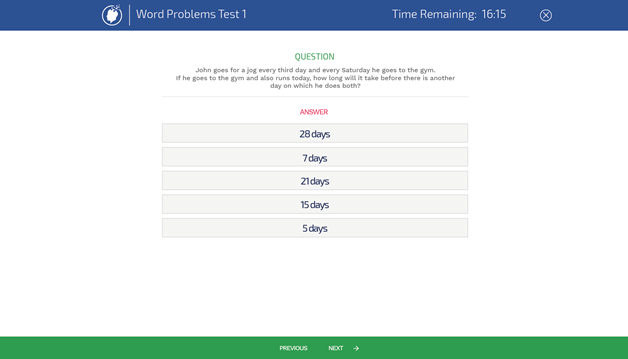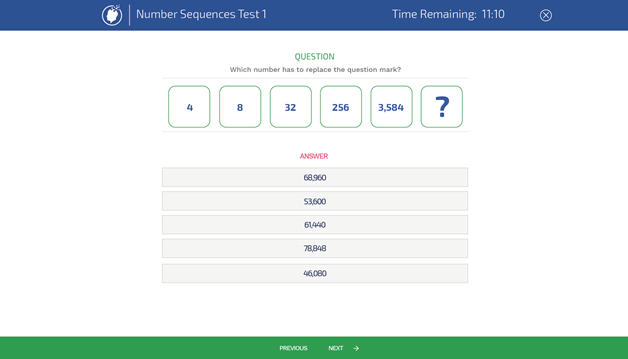Numerical Reasoning Tests are founded on some form or combination of basic numeracy, and Numerical Literacy Test elements which are commonly referred to as basic math tests. The tests are designed to assess a candidate on the concept of addition, subtraction, multiplication, and division of numbers and fractions. It also assesses averages, decimals, and some key geometrical concepts.
Almost all of the companies expect each and every desk job person to be numerically literate. These tests are simple, clear and concise, and are to be done within the allocated time frame.
Numerical Reasoning Tests
The concept of "Numerical Reasoning" is broader than basic numerical literacy test and employ an advanced approach to assessment. This category can be classified as:
a) Word Problems
Word Problems are a sophisticated and specific type of test that assesses a tricky combination of numerical and verbal efficiency and fluency. The candidate is provided with a verbal statement that has a number of implicit arithmetic relationships that have to be uncovered from the written question. The statement contains all the necessary information, which points towards the solution.
Learn more about Word Problems by taking the FREE Word Problems Test with 3 questions. Click on the provided link above or the image below.

b) Number Sequences
The number sequences problems in a test are very common, and they are designed to look complicated, which in truth, they really are not. Number series are either picked from the existing number series already developed (rational number series, complex number series, arithmetic or geometric series, square series, cube series, Fibonacci series, Golden ratio etcetera) or a statement is developed by certain governing logic. The candidate has to find the underlying logic and find the upcoming or missing number from the series.
By clicking the image below you can practice 10 free questions of our number sequences practice test:

c) Graphs and Charts Interpretation
In the Numerical Reasoning Test, you will encounter Graphs and Charts as one of the hardest elements found in the test. The candidate has to filter through an abundance and overload of data to retrieve and transpose the desired variables into a logical answer. Another form of such a test can be presented to candidates through the use of tables, where the candidate has to draw a conclusion from related data.
d) Ratios, Proportions, and financial Arithmetic
The test assesses the candidate’s knowledge of ratios and proportions, and the relationship of quantities in reference to the degree of variation for different data types. The numerical tests also employ financial calculations such as profit, loss, taxation, and currency conversions. The tests often use a common approach, and employ unit conversions from one currency to another, using an exchange rate.
e) Advanced Numerical Reasoning Tests
Advanced Numerical reasoning aptitude tests are used for high-level applications of mathematical operations for analysis and data interpretation. These types of tests often do not have a limitation on the question statements and a candidate may have to think “out of the box” to keep up with the format of the test.
Also, these types of tests are often hard to characterize, but what they all seem to have in common is, the degree of accuracy and precision required for the solution of the tests.
All of these tests have been compiled and can be found in our Numerical Reasoning Preparation Package!


 Numerical Reasoning aptitude tests are developed to assess a candidate on the basis of number operations, ranging from basic arithmetic to advanced level critical and logical reasoning. Numerical aptitudes are an integral part of aptitude class, where cognitive capabilities like arithmetic, number sequences, percentages, financial arithmetic, and data interpretation, are measured. These types of tests can be referred to as “number-smart”, and often categorized as “speed tests” owing to the fact that they are taken under a specific time allocation. These tests are designed to assess basic numeracy and do not allow the use of calculators.
Numerical Reasoning aptitude tests are developed to assess a candidate on the basis of number operations, ranging from basic arithmetic to advanced level critical and logical reasoning. Numerical aptitudes are an integral part of aptitude class, where cognitive capabilities like arithmetic, number sequences, percentages, financial arithmetic, and data interpretation, are measured. These types of tests can be referred to as “number-smart”, and often categorized as “speed tests” owing to the fact that they are taken under a specific time allocation. These tests are designed to assess basic numeracy and do not allow the use of calculators.
